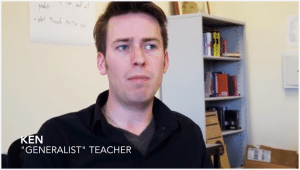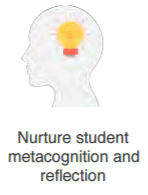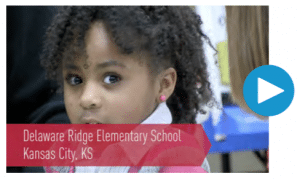How Do We Know Where Students Are?
Education Domain Blog
This post first appeared on CompetencyWorks on June 16, 2017.
This is the thirteenth blog in a series for the National Summit on K-12 Competency-Based Education. We are focusing on four key areas: equity, quality, meeting students where they are, and policy. (Learn more about the Summit here.) We released a series of draft papers in early June to begin addressing these issues. This article is adapted from In Search of Efficacy: Defining the Elements of Quality in a Competency-Based Education System. It is important to remember that all of these ideas can be further developed, revised, or combined – the papers are only a starting point for introducing these key issues and driving discussions at the Summit. We would love to hear your comments on which ideas are strong, which are wrong, and how we might be able to advance the field.
In the traditional system, grade-level curriculum is delivered to students based on their age, whereas competency-based systems assume that schools should be organized to meet students where they are in terms of academic, cognitive, and lifelong learning skills (growth mindset, habits of work and learning, metacognition, and social and emotional skills). In this blog, we address how to know where students are, what do we do once we know, and what strategies can help us navigate system constraints.
How Do We Know Where Students Are?
We cannot begin to answer the question, “How do we know where students are?” without first addressing the inherent assumptions that we bring to this very important question. Where students are. In relation to what, exactly? With younger students, we tend to look at gross and fine motor skill development, social-emotional development, and literacy and numeracy development. As students move into late childhood – eight or nine years of age – most systems begin the transition to content exploration, while continuing to support skill development. By the time students are ‘tweens and teens, the system’s priority is content coverage.
Key Assumptions:
- Student achievement has historically been defined in terms of student acquisition of broad content knowledge along a time-bound sequence that begins when children are eight or nine. The assumption that content knowledge is an appropriate measure of learning – after core literacy and numeracy is taught in the early grades – or that it is sufficient to prepare learners for the 21st century workforce is problematic for a number of reasons.
- A second key assumption is that our age-based approaches are fair and valid. It is promising to see standards emerge – such as Common Core Learning Standards, Next Generation Science Standards, and the C3 Framework for Social Studies – that prioritize the development of essential disciplinary and transdisciplinary skills and practices. The research basis of the standards provide critical clarity and transparency around the skills required for college readiness. The trick to meeting students where they are is to create learning science-informed pathways that support students in achieving the outcomes associated with the standards. Rather than coupling the standards with specific ages or grades, they would be coupled with learning progressions that provide guidance to students within their zone of proximal development, regardless of their age.
- The third key assumption is that teachers (and systems) are the “owners” of learning progressions, and solely responsible for using student performance data to make decisions about a student’s needs or next steps. In other words, it is teachers and administrators who must know where students are and make unilateral decisions about how to move students along. This notion is being challenged by practitioners in exciting ways, such that students are able to see and understand where they are in their own learning pathway, be involved in the planning of their pathway, and take ownership of daily and weekly decisions about their goals and priorities.
In critically examining these key assumptions of the old-paradigm accountability system, new opportunities emerge for designing truly learner-centered systems that identify where students are on their developmental path. In the section that follows, we describe a range of structural, pedagogical, and relational shifts that are essential to identifying where students are in a learner-centered, equity-oriented model.
Domain 1. Designing Equity-Oriented Structures For Knowing Where Students Are
As previously discussed, our traditional system is crowded by curriculum, assessments, and instructional approaches that emphasize broad content knowledge and accountability. A critical step toward re-orienting our learning systems is to build new structures that serve to create the conditions for deep, purposeful, and preparatory learning that is accessible to all learners. The four structural changes described below are systems-level changes, although many schools operating with autonomy may be positioned to enact some or all of these changes.
 The first key structural change required for meaningfully identifying where students are is to hone our indicators and measures for student learning. This means distilling our academic goals to a set of essential academic and lifelong learning competencies (in many schools and districts, these are coupled with developmental benchmarks or competencies to track physical and emotional development, particularly in younger children). Each competency is accompanied by a student-facing learning progression that articulates what proficiency looks like at each performance level on the path to mastery. These skill-based progressions or continua become central tools to support instruction, inform student feedback, guide student self-monitoring, and help identify when students are ready to advance to the next level. The shift from a content focus to a competency focus was a “lightbulb moment” for KAPPA International, whose leadership team recognized that shifting their focus from credit acquisition to helping students build the “skills and knowledge to be successful after they leave here” was a much greater service to their students. Their efforts led them to a critical discovery about the powerful connection between learning and “work habits.”
The first key structural change required for meaningfully identifying where students are is to hone our indicators and measures for student learning. This means distilling our academic goals to a set of essential academic and lifelong learning competencies (in many schools and districts, these are coupled with developmental benchmarks or competencies to track physical and emotional development, particularly in younger children). Each competency is accompanied by a student-facing learning progression that articulates what proficiency looks like at each performance level on the path to mastery. These skill-based progressions or continua become central tools to support instruction, inform student feedback, guide student self-monitoring, and help identify when students are ready to advance to the next level. The shift from a content focus to a competency focus was a “lightbulb moment” for KAPPA International, whose leadership team recognized that shifting their focus from credit acquisition to helping students build the “skills and knowledge to be successful after they leave here” was a much greater service to their students. Their efforts led them to a critical discovery about the powerful connection between learning and “work habits.”
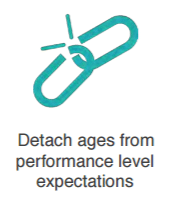
A second critical shift is to decouple performance levels from age-based grade levels. In some schools this takes the form of multi-age “performance bands” (multiple years within which students can become competent in identified content and skills) as a way to organize capacity to meets students where they are. Schools all over the world have implemented these “stage, not age” approaches, but the United States struggles due to policy that assumes age-based groupings. Despite this, the practice exists: The Montessori model is grounded in this belief, and Parker Varney Elementary School uses multi-age bands as is seeing achievement gains. Chicago’s W. Belden k-8 school is another example of a successful multi-age model. At the other end of the developmental arc are alternative high schools, where learning cohorts are typically multi-age in order to allow students to take the specific courses they need (to address past failure) in order to advance toward graduation as rapidly as possible. Rural schools also create multi-age learning cohorts in order to address economic realities due to low enrollment numbers.
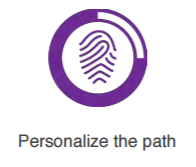
Third, student pathways need to be personalized, reflecting their unique needs, strengths, goals, and pace. At Memorial Elementary in Sunburn, learning targets and progress goals are set for the individual student, not relative to other students. This is not an attempt to “lower” or eliminate standards, but rather to acknowledge that learners enter classrooms with a range of skills, and that learning itself is not a linear process: while one child learns to read at age four and another at age eight, these are not reliable predictors about how well these children will be able to read by the time they are ten (though appropriately supports the “jaggedness” of all of our learning profiles.

Fourth, we need to re-think the structures currently in place that undermine strong relationship-building between learners and adults. In a sense, teacher turnover is embedded into our traditional systems – not because teachers leave the school, but because students leave the teacher as they advance to the next grade. In high schools, sustained relationships are often only supported through a “homeroom” or advisory model (though even the composition of these groups can be changed year to year). At Noble High School, a human capital strategy is purposefully designed to support long-term relationship building as part of their academic model. Specifically, interdisciplinary teaching teams stay with the same student cohort throughout their entire high school experience, a structure that they have designed to optimize their ability to provide timely, differentiated supports to all students.
Domain 2. Knowing Who Our Students Are, And Enacting An Ethic Of Care
If we are to help all students engage deeply in their learning and progress at their optimal pace, then knowing who our students are, in the context of a supportive and caring relationship, is arguably just as essential as knowing where they are. Positive adult-learner relationships are of central importance because we know learning is not strictly a cognitive process; it is a profoundly socially and culturally mediated one. This multidimensionality of learning has several major implications for our daily work as practitioners.
First, our work as educators must involve an effort to create learning experiences that are grounded in a deep understanding of, and appreciation for, the dynamic contexts that mediate the lives and daily experiences of our students both inside and outside of school.
Culturally responsive education is an example of this appreciative approach to integrating our students’ culturally developed frames, artifacts, and tools into learning. If we are serious about equitable, competency-based learning environments for all children, then we must work to deepen our awareness and understanding of the impacts, for example, of race and racial stress, as well as poverty and poverty, immigration, as they are experienced by learners and adults. Knowing our students means working to deepen our awareness of these complex factors and constructing learning experiences and communities that meet students where they are, at the intersection of their complex identities and contexts.
Second, our work as educators must involve relationships with students who are characterized by an “ethic of care” that is receptive and attentive to their needs. This moves the work of identifying where students are beyond a purely diagnostic practice so that we also notice, acknowledge, and respond positively to students’ feelings and desires.
This ethic of care is particularly critical in competency-based models, and even more so in programs that serve students who are “off-track.” In a conventional program the existence of a D, or even a C, creates a safety net for students: while they may not have learned much, it may be enough to pass a class, achieve promotion, or reach graduation, even in the most hostile of school environments. While this doesn’t prepare them for post-secondary life, it does create a sense of forward movement toward some sort of future. In competency- based models, where proficiency is required, students who find themselves unable to proceed in the face of their own confusion can find tremendous success in programs with a strong ethic of care, buttressed by significant emotional, social, cultural, and academic supports.
There are exciting school models that place an ethic of care and a strengths-based approach at the center of the work. At Bronx Arena, learning is understood to be predicated on students’ sense of belonging and wellness, and the human capital strategy is designed to ensure optimal human connection and support for learners. Specifically, a generalist teacher, who spends four hours in an “Arena” learning block (a self-paced, student-managed learning period) with the same twenty-plus students each day, is partnered with a youth development “Advocate- Counselor” who co-facilitates, providing ongoing social-emotional support by addressing needs and obstacles as they arise – quite literally in real-time. This is but one of many different models that reflect a deeply held commitment to knowing who their students are and embedding into the model strong and consistent relationships that support students over the course of their entire learning journey.
At Casco Bay High School, an EL Education model, every student is part of a Crew: a small community whose motto is “We are crew, not passengers.” The role of crew is to provide students with a consistent, multi-year, supportive community that will see them through challenging and positive times. Crew creates a place for academic monitoring and support, but also team-building, celebration, character education, and problem-solving.
At the heart of this essential relational work is asserting the primacy of a strengths-based perspective and approach with regard to cultural competence, cultural relevance, and “funds of knowledge” in relation to working with and in marginalized communities, whether rural or urban. While cultural, social, and economic challenges are real, casting long shadows, the strength of communities and the strengths of the our individual students must sit at the heart of our thinking with regard to competency-based models and pedagogical practice.
Domain 3. Recognizing Where Students Are And Co-Constructing A Path Forward
How do teachers identify where students are, and what happens once they do? In this stage, we discuss three important pedagogical practices of learner-centered models: a positive youth development approach, a commitment to cultural responsiveness, and action research. If we assume a commitment to building on learner strengths and integrating cultural knowledge and assets into our approach (as discussed above), the key that unlocks the emergent opportunities to identify where students are and what they need is to engage in a daily form of practitioner research, in which educators assume an inquiry stance in their work with students. Practitioner research involves constantly posing questions about where students are, what strengths to build upon, and how to most effectively identify and respond to needs. Educators reframe roadblocks to students’ understanding, thinking of the times students struggle not as unfortunate hindrances, but as “puzzling moments” that can generate new connections and new insights to inform learning opportunities. On a daily basis, educators put into practice the following pedagogical strategies designed to help identify where students are.
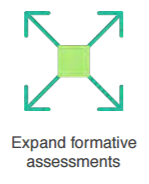
In learner-centered classrooms, educators think much more broadly about the frequency, structures, focus, and role of formative assessment in learning. Mature competency-based programs approach assessment as a learning experience: an opportunity to take stock of what one has learned, synthesize ideas, and apply them to new contexts. For practitioners engaged in meeting students where they are, formative assessment is a robust, essential tool. Educators who are highly attuned to their students approach formative assessments as daily, moment-by- moment occurrences: conferences, peer feedback, observations, and self-reporting cues, as well as other oral or written forms. This is often coupled with more formal formative assessment opportunities, which provide students with additional learning moments and provide both teachers and students with critical data about student understanding.
Technology-enabled formats can play a helpful role, too, by providing teachers with the benefit of streamlined data aggregation and analysis, and also opening up new channels for delivering real-time feedback to students even when off-campus.
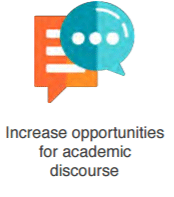
In learner-centered classrooms, educators expand opportunities for student discourse in the classroom, generating an often overlooked rich data stream for diagnosing student needs and gauging understanding in real time. The more teachers can listen in on how students are making meaning of new information, making connections to their existing schema, and identifying gaps or misconceptions, the more promptly they can seize the opportunity for providing responsive, tailored supports. Expanded student talk also reduces barriers that struggling writers often face when asked to provide written responses to show their thinking or ability to synthesize ideas.
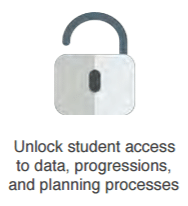
In learner-centered classrooms, educators engage students in identifying where they are, and in shaping the path ahead, fostering student ownership over their own learning journey. As previously mentioned, students should have the opportunity to access their data in real time, participate fully in the planning and decision-making process for their learning pathway, and be encouraged to reflect on past decisions and outcomes to further the learning and metacognition to inform future decisions.
In learner-centered classrooms, educators create ongoing metacognitive and reflective experiences for learners in order to position them as developing experts. As John Dewey reminds us, “We do not learn from experience. We learn from reflecting on experience.” One of the critical tools that supports students in becoming independent, self-regulating learners is the development of metacognitive skills: the capacity to monitor their learning, identify the limits of their knowledge or ability, and identify and use strategies and tools to expand their capacity. This is one of the critical distinctions between novice and expert learners. The stronger students’ metacognitive skills are, the stronger their capacity to “know where they are” without depending on teachers or others for this information. These pedagogical shifts begin the work of creating learning spaces in which both teachers and students know “where they are” and can make informed decisions about how to move forward.
Finally, learner-centered classrooms have retired the label “failing students,” replacing it with terms that describe students’ skills (rather than their character). Students’ skills and knowledge are described as “emerging,” “proficient,” “college-ready,” etc. as reference points for where students are. In a true competency-based system, students cannot fail. In some models, “Fs” are replaced with “Not yet.” In other models, such as the competency model shared by Building 21 and The U School in Philadelphia, students are able to locate themselves on a continuum toward mastery, with emphasis squarely on growth and the specific feedback that can help them advance along the progression toward college-readiness. For struggling students, this “failure” label directly undermines what we know about the importance of expectancy from the literature on student motivation; specifically, that students need to feel a sense of possibility about their own achievement in order to willingly engage in challenging tasks.
Follow this blog series:
Equity
- Post #1 – CompetencyWorks Releases New Reports on Key Issues in Competency Education
- Post #2 – Introducing an Equity Framework for Competency Education
- Post #3 – Take on the Challenges: Ensuring Equity in Competency-Based Systems
- Post #4 – Building a Comprehensive Set of Equity Strategies
- Post #5 – Charting the Course for Equity in Competency Education
Quality
- Post #6 – Three Driving Questions for Developing High-Quality Competency-Based Systems
- Post #7 – Exploring a Four-Part Quality Framework for Competency Education
- Post #8 – Nine Structural Domains of Competency Education, Part I
- Post #9 – Nine Structural Domains of Competency Education, Part II
- Post #10 – How Could We Build a Shared Understanding of Quality in Competency Education?
- Post #11 – Charting the Course for High Quality Personalized, Competency Education
Meeting Students Where They Are
Learn more:
- Learn about the National Summit on K-12 Competency-Based Education.
- For more resources and recommended reading, visit CompetencyWorks, the CompetencyWorks wiki.
- Follow CompetencyWorks and iNACOL on Twitter: @CompetencyWorks, @nacol.
- National Summit on K-12 Competency-Based Education Recommended Reading

